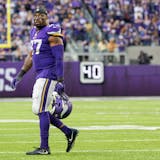Believe it or not, it has been just over 30 years that cellphones have been a feature in our daily lives. The first mainstream use began in 1984, just after what is called Enhanced 911 — or E911 — service was implemented in the Twin Cities in late 1982. (The rest of Minnesota got 911 of some type by 1987, and all of the state had E911 by the late 1990s). Unfortunately, there is an unintended but negative connection between these two events 30-plus years back.
The "enhanced" part of E911 refers to the fact that a call to 911 from a land-line phone (and only a land-line phone) can be precisely and automatically routed to the 911 dispatch center appropriate for the specific location from which the call was dialed. For example, if you dial 911 from a land-line phone in a business on the southeast corner of 50th Street and France Avenue, your call will go to the Minneapolis 911 center downtown, because you are physically in Minneapolis at that location. If you go across the street to a land-line phone in a business on the southwest corner, your 911 call will go to the Edina police dispatcher at Edina City Hall, because you are physically in Edina.
In both cases, the 911 call is presented with a data display that tells the 911 operator:
• The phone number from which you dialed.
• The specific and locatable address at which that telephone line is installed, so emergency responders can find you if you can't talk or are disoriented or don't know what address you're at.
• The name of the party or business that pays for that phone line.
• The ID of the police, fire and ambulance agencies responsible for that address.
The connection (or rather, disconnection) between E911 coming in 1982 and cellphones starting in 1984 is that cellphones have pretty much undone many of the safety advantages offered by Enhanced 911.


